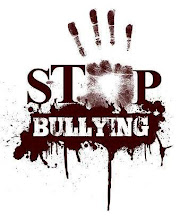i. Bully-victims: A special type?
• Kids who harass and intimidate others were once lumped together. But today, researchers have identified two different types of bully.
• The “pure” bullies are the confident aggressors. They dish out intimidation and harassment. In general, they don’t get victimized by other bullies.
• The “bully-victims,” by contrast, are both bullies and the victims of bullying.
ii. Such victimized aggressors suffer from a distinctive set of problems. Compared to pure bullies, they may be more
• Anxious
• Depressed
• Lonely
• High-strung
iii. Bully-victims are at a greater risk for emotional problems
• An international survey of 11- to 15-year olds found that bully-victims experienced worse emotional adjustment in all 25 countries surveyed (Nansel et al 2004).
• Other studies confirm this trend.
A longitudinal study tracking Finnish boys from age 8 to early adulthood found that bully-victims were at an especially heightened risk for developing emotional disorders, including anxiety, depression, psychosis, substance abuse, and anti-social personality disorder (Sourander et al 2007b).
A study of American adolescents found that bully-victims suffered more psychological distress—-as measured by their own self-reports and the judgments of their teachers (Juvoven et al 2003). Compared to pure bullies, bully-victims suffered higher levels of anxiety and depression.
Another study of American teenage boys found that bully-victims suffered the worst psychological health of any group—including pure bullies and passive victims (Stein et al 2007).
iv. Bully-victims may have more difficulty “fitting in”
• A Swiss study has reported that kindergartners identified as bully-victims by their peers were less cooperative and less sociable (Perren and Alsaker 2006).
• Other studies of older children have reported that bully-victims are more likely to be avoided by their peers (Nansel et al 2004; Juvoven et al 2003). They are also more likely to feel lonely and to have difficulty making friends (Nansel et al 2001; Juvoven et al 2003).
v. Bully-victims may be more likely to suffer from over-arousal
• Arousal is the degree to which we are engaged or “turned on” to the environment. It describes our state of excitement about what is going on.
• When people are in low states of arousal, they may find it easy to control their emotions.
• When they are in very high states of arousal, they may be tense and overreact to potentially stressful situations. High arousal is also correlated with an elevated sensitivity to being overlooked or going unrewarded.
• A British study measured the arousal levels of 13- and 14-year old students (Woods and White 2005). Kids who were pure bullies had rather low levels of arousal.
• By contrast, bully-victims had higher levels of arousal than all other groups, including passive victims.
• In everyday terms, these kids were high “strung.” In fact, over 23% of bully-victims had arousal levels in the clinically high range (Woods and White 2005).
vi. Bully-victims have more difficulty in school.
• An American study of young school kids (aged 8 to 13) has reported that bullies who were also victims were more likely to feel unsafe and feel they didn’t belong at school (Glew et al 2005).
• These findings are confirmed by the perceptions of teachers. In an American study of young adolescents, teachers reported that bully-victims had more conduct problems and were less engaged in school than was any other group—including both pure bullies and passive victims (Juvoven et al 2003).
• There is also evidence that bully/victims are less successful academically. In the study conducted by Gwen Glew and colleagues, bully-victims were more likely to be low achievers (Glew et al 2005). Similar findings have been reported by Schwartz (2000).
vii. Bully-victims are more likely to endorse “Machiavellian” attitudes.
• Several lines of evidence suggest that bully-victims are more likely than pure bullies to report cynical attitudes. For example, the Glew found that bully-victims were much more likely to endorse cheating than were other kids (Glew et al 2005).
• And a study of Greek primary school children found that, compared with pure bullies and passive victims, bully-victims were more likely to endorse Machiavellian beliefs and show a lack of faith in human nature (Andreou 2004).
• Perhaps these studies reflect real differences in attitude between bully-victims and pure bullies. But we have to remember that these differences are based on what kids voluntarily report to researchers. So it’s possible that bully-victims are simply more candid (or less crafty) when discussing themselves.
*By: Nursazella



1 comment:
خدمات مكافحة حشرات دبى 0567410494 التاج الملكى
خدمات مكافحة حشرات دبى
تقوم الشركة بطردها سواء كانت حشرات طائرة أم حشرات زاحفة، فعادة تكون الحشرات الكثيرة في مدينة دبي هي الصراصير والرمة والفئران، حيث نعرض لكم اليوم ما تقوم به
شركة مكافحة حشرات دبى
من طرد الحشرات بجميع أنواعها وتقوم بعمل نصايح للعملاء حتى لا تعود الحشرات مرة أخرى.
Post a Comment